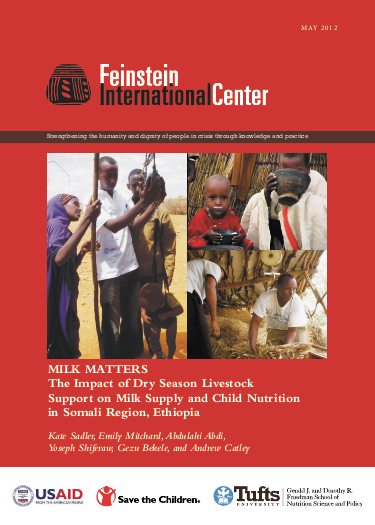
Children who live in pastoralist areas are increasingly referred to as some of the most nutritionally vulnerable in the world. In Somali Region, Ethiopia, levels of global acute malnutrition among young children are regularly reported to rise above 15 percent, the level defined as a nutritional emergency by the World Health Organization. Yet from work going back many decades in the Region, we know that animal milk, one of the most nutritionally complete foods in the world, plays an extremely important role in the diets of these children. Whilst there is considerable research and early warning literature that highlights the importance of livestock and livestock products for the income and the dietary intake of pastoralists in Somali Region, there is little work that describes use of these products within and amongst households, or that attempts to evaluate the significance of access to milk for the nutritional status of children. Phase I of the Milk Matters study investigated the value and use of milk in these communities (Milk Matters: The Role and Value of Milk in the Diets of Somali Pastoralist Children in Liben and Shinile, Ethiopia). Importantly, it established that, when available, milk is prioritized for consumption by young children and that the seasonal lack of access to animals and animal products, exacerbated during periods of drought, is widely perceived by pastoralists as a primary factor behind child malnutrition. Building off the results of this first phase, the second phase of Milk Matters consisted of two cohort studies designed to assess the impact of community-defined livestock interventions on the nutritional status of young children over the dry season in the Somali Region of Ethiopia. Where the international response to malnutrition has typically been reactionary in these areas, with the provision of a food basket and establishment of selective feeding as acute malnutrition rises, this study aimed to reveal the potential cost savings, both short and long term, economic and social, of a more preventative approach. The results of our work demonstrate that by targeting support to milking animals that stay close to women and children during dry season and/or drought, milk production and consumption among children is improved and their nutritional status benefits.